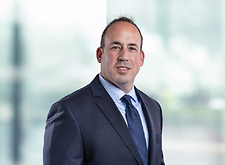Guidance Issued on New York State Brownfield Cleanup Program
The New York State Department of Taxation and Finance officially issued guidance on the changes to the Brownfield Cleanup Program that were enacted pursuant to the budget legislation passed by the New York State Legislature in 2022. Chapter 58 of the Laws of 2022, Part LL amended the Brownfield Redevelopment Tax Credit, and extended the program through 2032 (see our previous Hodgson Russ Brownfield Redevelopment Alert).
Here is a recap of the Technical Memorandum published by the Tax Department on March 17, 2023:
Site Preparation Credit Component
Projects that received a Certificate of Completion (“CoC”) between July 1, 2015, and June 24, 2021, may claim site preparation credits for a period of seven (7) years following the issuance of the CoC. Previously, these credits had to be claimed within five (5) years after the issuance of the CoC. The guidance stipulates that only sites which are (1) accepted into the Brownfield Cleanup Program and (2) received a CoC during the exception period are eligible to include costs paid or incurred within 84 months after the last day of the tax year in which the CoC is issued.
On-Site Groundwater Remediation Credit Component
Projects that received a CoC between July 1, 2015, and June 24, 2021, may claim on-site groundwater remediation credits for a period of seven (7) years following the issuance of the CoC. Previously, these credits had to be claimed within five (5) years after issuance of the CoC.
Tangible property credit component
Sites that received a CoC between March 20, 2010, and December 30, 2015, may claim tangible property credits (“TPCs”) for a period of 180 months (15 years) following issuance of the CoC. Previously, it was required for TPCs to be claimed within either 120 months or 144 months of the date of the CoC.
Beginning with the 2022 taxable year, for sites that are in compliance with Track 1 remediation standards (the highest standard), athletic facilities and their components will be considered buildings and structural components under the Internal Revenue Code for TPC calculation purposes. The Department defines athletic facilities as: stadiums, baseball parks, basketball courts and other athletic facilities. Components of athletic facilities include: sports field turf, site lighting, sidewalks, access and entry ways, as well as other improvements added to land.
Property Placed in Service
The guidance provides that, typically, TPCs are claimed at the time the property is placed in service. However, for eligible affordable housing projects, condominiums, and cooperative housing projects, tangible property is considered to be “placed in service” when a certificate of occupancy (“CoO”) is issued (this may be a CoO other than the final CoO). The guidance notes that the TPC must be claimed the later of either (1) the year that the CoO is issued, or (2) the year that the CoC is issued. Additionally, the Department clarified that the costs when calculating the credit:
- May only be claimed once when the property is placed in service;
- Cannot include costs for repairs, replacements, and improvements to property previously placed in service; and
- May not include costs incurred after the issuance of the final CoO.
New and amended tangible property component project categories
The Brownfield Cleanup Program has added two new enhanced project categories: (1) sites located in disadvantaged communities and (2) sites developed in renewable energy facilities. Projects demonstrating sufficient eligibility for these categories may receive a 5% increase to the credit component rate (not to exceed a combined credit component rate of 24%).
The Department also amended two existing project categories for sites located in a city having a population of one million or more (so, New York City):
- Sites located in a designated eligible brownfield opportunity area must meet the conformance determinations pursuant to General Municipal Law § 970-r(10).
- The definition of affordable housing, provided by the Department of Environmental Conservation, now includes projects situated on a brownfield site that demonstrate that the project will qualify for benefits or be eligible under an affordable housing program. In order to qualify for the 5% affordable housing rate bonus, the project must provide a CoC.
Technical Memorandum TSB-M-23(1)C, 1(l) is the first official guidance provided by the Department since the New York State budget legislation was passed in 2022.
For more information, contact Joseph N. Endres (716.848.1504), Michael J. Hecker (716.848.1599), or any member of our Brownfield Redevelopment Practice.
Disclaimer:
This Client Alert is a form of Attorney Advertising. Hodgson Russ LLP provides this information as a service to its clients and other readers for educational purposes only. Nothing in this Client Alert should be construed as, or relied upon, as legal advice, or as creating a lawyer-client relationship.
Featured
- Partner
- Partner
- Partner
- Partner
- Partner
- Partner
- Partner







